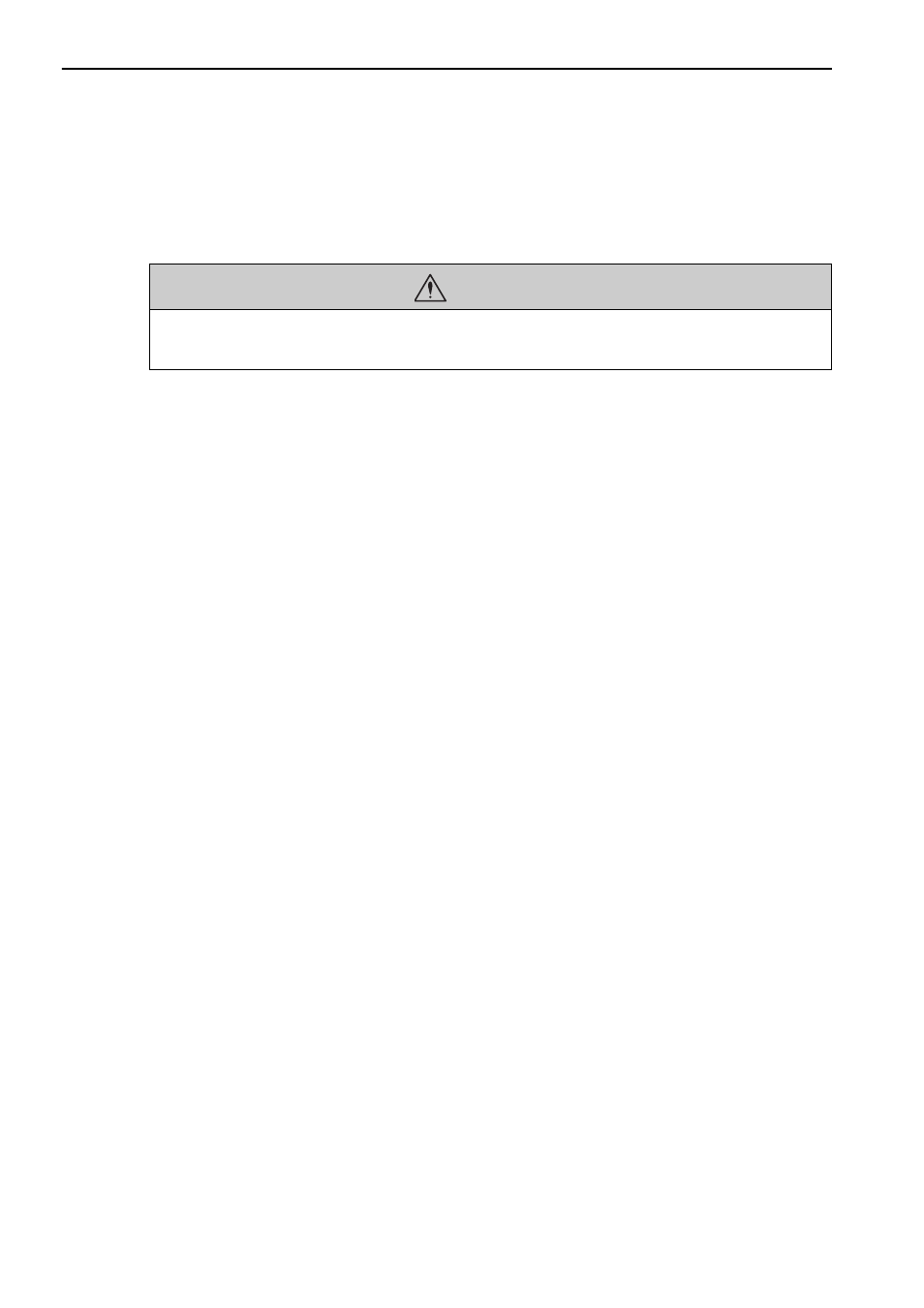Caution, 1) preparation, 2) when advanced autotuning cannot be performed – Yaskawa Sigma-5 User Manual: Design and Maintenance - Rotary Motors - Analog Voltage and Pulse Train Reference User Manual
Page 223

6 Adjustments
6.3.1 Advanced Autotuning
6-20
• Filters (torque reference filter and notch filter)
• Friction compensation
• Anti-resonance control
• Vibration suppression (Mode = 2 or 3)
Refer to 6.3.3 Related Parameters for parameters used for adjustments.
(1) Preparation
Check the following settings before performing advanced autotuning.
The message “NO-OP” indicating that the settings are not appropriate will be displayed, if all of the following
conditions are not met.
• The main circuit power supply must be ON.
• There must be no overtravel.
• The servo ON signal (/S-ON) must be OFF.
• The control method must not be set to torque control.
• The gain selection switch must be in manual switching mode (Pn139.0 = 0).
• Gain setting 1 must be selected.
• The test without a motor function must be disabled (Pn00C.0 = 0).
• All alarms and warning must be cleared.
• The hardwire baseblock (HWBB) must be disabled.
• The write prohibited setting parameter (Fn010) must be set to Write permitted (P.0000).
• Jcalc must be set to ON to calculate the load moment of inertia when the tuning-less function is enabled
(Pn170.0 = 1: factory setting) or the tuning-less function must be disabled (Pn170.0 = 0).
Notes:
• If advanced autotuning is started while the SERVOPACK is in speed control, the mode will change to position
control automatically to perform advanced autotuning. The mode will return to speed control after completing the
adjustment. To perform advanced autotuning in speed control, set the mode to 1 (Mode = 1).
• The reference pulse input multiplication switching function is disabled while performing advanced autotuning.
(2) When Advanced Autotuning Cannot Be Performed
Advanced autotuning cannot be performed normally under the following conditions. Refer to 6.4 Advanced
Autotuning by Reference (Fn202) and 6.5 One-parameter Tuning (Fn203) for details.
• The machine system can work only in a single direction.
• The operating range is within 0.5 rotation. (Also for SGMCS direct drive motors, the operating range is
within 0.05 rotation.)
(3) When Advanced Autotuning Cannot Be Performed Successfully
Advanced autotuning cannot be performed successfully under the following conditions. Refer to 6.4
Advanced Autotuning by Reference (Fn202) and 6.5 One-parameter Tuning (Fn203) for details.
• The operating range is not applicable.
• The moment of inertia changes within the set operating range.
• The machine has high friction.
• The rigidity of the machine is low and vibration occurs when positioning is performed.
• The position integration function is used.
• P control operation (proportional control) is used.
Note:If a setting is made for calculating the moment of inertia, an error will result when P control operation is selected
using /P-CON signal while the moment of inertia is being calculated.
• The mode switch is used.
Note:If a setting is made for calculating the moment of inertia, the mode switch function will be disabled while the
moment of inertia is being calculated. At that time, PI control will be used. The mode switch function will be
enabled after calculating the moment of inertia.
CAUTION
• Because advanced autotuning adjusts the SERVOPACK during automatic operation, vibration or over-
shooting may occur. To ensure safety, perform advanced autotuning in a state where the SERVOPACK
can come to an emergency stop at any time.